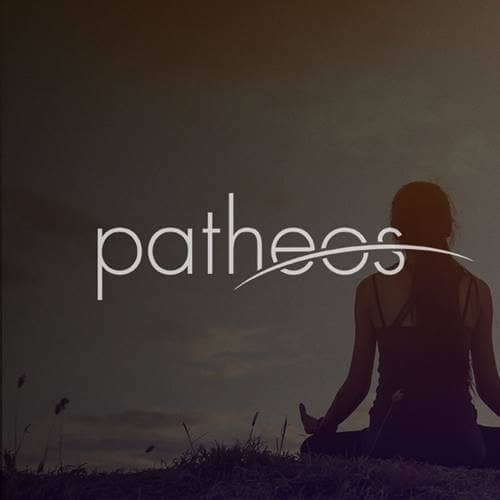- Trending:
- Pope Leo Xiv
- |
- Israel
- |
- Trump
- |
- Social Justice
- |
- Peace
- |
- Love
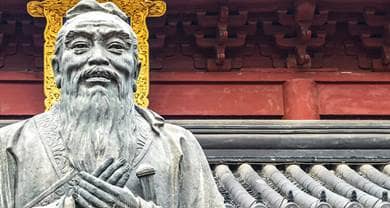
RELIGION LIBRARY
Confucianism
Sacred Narratives
The idea of learning from the past is fundamental to Confucian thinking, and the early histories and biographies are the closest thing to sacred narratives in Confucianism. Among the "classics" are many stories that contain a moral component or exemplify an effort to understand why things happened as they did.
Kongzi (better known as "Confucius" in the West) sought inspiration from the historical, poetic, and ritual texts of the Western Zhou dynasty (1045-771 B.C.E.), founded nearly five hundred years before his birth. Among these are the Shujing (Classic of Documents), which tells the story of the dynasty's rise and fall. The early years of the dynasty were plagued by civil war.
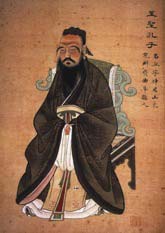 At the heart of this conflict was the matter of royal succession. The brother and chief minister of the dynastic founder, the Duke of Zhou, argued that Tian (Heaven, the high god worshipped by the Zhou kings) had bestowed its blessing on all of the Western Zhou people, especially the king's ministers, rather than on the royal lineage alone. Other factions at court, however, countered that the king alone was the recipient of divine authority. Unsurprisingly, this argument prevailed with Zhou kings. Yet the Duke of Zhou's view that Tian's mandate (Tianming) is gained and maintained by merit rather than blood eventually became very influential on Kongzi and his followers much later. Confucians would come to see the Western Zhou's collapse in 771 B.C.E. as an act of Tian that signaled the loss of the heavenly mandate to rule. The story of the Western Zhou's beginnings, however, convinced Confucians that just as virtuous rulers once came to power and brought prosperity and harmony, so too could sage kings walk the earth again in their own time and order society with tradition, ritual, and virtue.
At the heart of this conflict was the matter of royal succession. The brother and chief minister of the dynastic founder, the Duke of Zhou, argued that Tian (Heaven, the high god worshipped by the Zhou kings) had bestowed its blessing on all of the Western Zhou people, especially the king's ministers, rather than on the royal lineage alone. Other factions at court, however, countered that the king alone was the recipient of divine authority. Unsurprisingly, this argument prevailed with Zhou kings. Yet the Duke of Zhou's view that Tian's mandate (Tianming) is gained and maintained by merit rather than blood eventually became very influential on Kongzi and his followers much later. Confucians would come to see the Western Zhou's collapse in 771 B.C.E. as an act of Tian that signaled the loss of the heavenly mandate to rule. The story of the Western Zhou's beginnings, however, convinced Confucians that just as virtuous rulers once came to power and brought prosperity and harmony, so too could sage kings walk the earth again in their own time and order society with tradition, ritual, and virtue.
Another key Western Zhou text for Kongzi and his disciples was the Shijing (Classic of Poetry). Kongzi believed that the poems found in this ancient collection reinforced his basic view of humans as inheritors of great moral traditions and partners with Tian in the moral transformation of society. The Shijing consists mostly of folk songs about love and work, although its later portions include lyrics originally sung as part of Zhou religious ceremonies. The former often depict lonesome maidens pining for their lovers or beleaguered peasants laboring for unappreciative landlords, while the latter describe cultural heroes such as Hou Ji, a minister of the mythical sage-emperor Yao who later was deified as the god of agriculture, and Tang, the virtuous king who overthrew the corrupt, semi-legendary Xia dynasty (2700-1600 B.C.E.?) and founded the Shang dynasty (1700-1027 B.C.E.). Later Confucian commentators often interpreted the Shijing's folk songs as moral allegories, whereby "lonesome maidens" and "lovers" became virtuous officials wishing to serve a sage-ruler.
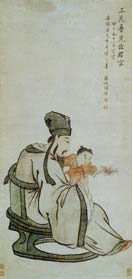 Kongzi himself left no writings. Collections of aphorisms and anecdotes related to Kongzi, such as the Lunyu (Analects), were assembled by Kongzi's disciples after his death. Neither the Lunyu nor other texts related to early Confucian thinkers were as important to Kongzi's followers as the Wujing ("Five Classics" of Western Zhou origin), which traditionally are attributed to Kongzi as writer or editor. It was these works of early Chinese literature that became the first canonical writings of the Confucian tradition in the 2nd century B.C.E.
Kongzi himself left no writings. Collections of aphorisms and anecdotes related to Kongzi, such as the Lunyu (Analects), were assembled by Kongzi's disciples after his death. Neither the Lunyu nor other texts related to early Confucian thinkers were as important to Kongzi's followers as the Wujing ("Five Classics" of Western Zhou origin), which traditionally are attributed to Kongzi as writer or editor. It was these works of early Chinese literature that became the first canonical writings of the Confucian tradition in the 2nd century B.C.E.
The Wujing did not attain their final form until Confucianism was adopted as the Han dynasty's official ideology and its most cherished texts became the basis of the civil service examination system that dominated official education in China for more than two thousand years. In addition to the aforementioned Shujing and Shijing, they include the Yijing (Classic of Changes), the Liji (Record of Rituals), and the Chunqiu (Spring and Autumn Annals).
For early Confucians, the Yijing -- which originally was a manual of divination used by the Western Zhou court -- confirmed their view that human beings and the universe exist in a harmonious unity, which then allows events in one sphere (e.g., the natural world) to influence events in another sphere (e.g., human affairs), and thus allow for the prediction of such events. The Liji describes court rituals and other ceremonies that Confucians sought to rediscover and reenact as a way of restoring society to its lapsed virtue.
Like the Shujing, the Chunqiu was read by Confucians not only as a record of past events, but also as a set of precedents and models for the present and the future. All of these texts were based on Western Zhou writings, but all subsequently were edited and altered by Confucians, especially during the Han dynasty. From the Han dynasty until the Ming dynasty (1368-1644 C.E.), most candidates for government office in China were required to pass examinations based on their knowledge not only of the Wujing, but of the standard Confucian interpretations of these texts. This led to the development of the formulaic "eight-legged essay" (baguwen), strict adherence to which was expected of successful examination takers during the Ming and Qing (1644-1911 C.E.) dynasties.
Probably beginning around the time of Kongzi's death, sayings attributed to him and recollections of his life were collected by various generations of his disciples and their followers, eventually producing the Lunyu by sometime during the Han dynasty (although the greater part of the text no doubt is of much earlier origin). The Lunyu is a highly varied work that contains depictions of the life and teachings not only of Kongzi, but also of his foremost followers. Some of these depictions are at odds with others, as in the narratives about Kongzi and his beloved disciple Yan Hui. Some passages describe Yan Hui as first among Kongzi's students, while others downplay his status in the early Confucian community. Other examples of tensions in the text include how various passages describe Kongzi's primary concerns. Some passages emphasize his teaching about ritual, others his love of literature, others his views of Tian, and still others his ideas about government. Both the collection of so many different representations of Kongzi in one text and the subsequent canonical status of that text show that Confucians, like shapers of scripture in other traditions, have been able to harmonize these varying images of their master.
The process that produced the Lunyu was mirrored in the development of texts associated with his later followers Mengzi (372-289 B.C.E.) and Xunzi (312-230 B.C.E.), as well as two other texts, the Zhongyong (The Doctrine of the Mean) and the Daxue (The Great Learning). The Zhongyong traditionally is attributed to Kongzi's grandson Zisi, who supposedly taught Mengzi, and is concerned with the proper relations between people in a hierarchical society modeled after early Confucians' idealized view of the Western Zhou dynasty. The Daxue traditionally is attributed to Kongzi's disciple Zengzi and is characterized by somewhat more mystical concerns than the Zhongyong, such as harmonizing oneself with the Tao by understanding its patterns both within and without oneself.
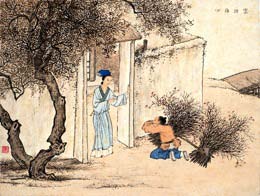 By the Han dynasty, the Lunyu, Mengzi, Zhongyong, and Daxue were well-known in their current forms but still were not valued as highly as the allegedly-older Wujing texts. It was not until these four texts were canonized as the Sishu (Four Books) by the Confucian reformer Zhu Xi (1130-1200 C.E.) that the Wujing texts were superseded as the primary Confucian scriptures. Just as important, if not more popular, than the Sishu texts were the narratives of moral heroes contained in Guo Jujing's Ershisi Xiao (Twenty-Four Filial Exemplars), produced during the Yuan dynasty (1260-1368 C.E.). These tales described how ordinary people demonstrated extraordinary Confucian virtue in honoring, nurturing, or protecting their parents, and lent themselves to easy memorization because of the concluding short poems that summarized each tale, such as the one that ends the story of the 11th filial exemplar, Wu Meng (who stayed awake and allowed mosquitoes to bite him nightly in order to spare his parents pain while they slept): "On summer nights without a mosquito net, / When mosquitoes are many he dares not wave them off; / They gorge themselves on his flesh and blood, / And thus he avoids their bothering his parents."
By the Han dynasty, the Lunyu, Mengzi, Zhongyong, and Daxue were well-known in their current forms but still were not valued as highly as the allegedly-older Wujing texts. It was not until these four texts were canonized as the Sishu (Four Books) by the Confucian reformer Zhu Xi (1130-1200 C.E.) that the Wujing texts were superseded as the primary Confucian scriptures. Just as important, if not more popular, than the Sishu texts were the narratives of moral heroes contained in Guo Jujing's Ershisi Xiao (Twenty-Four Filial Exemplars), produced during the Yuan dynasty (1260-1368 C.E.). These tales described how ordinary people demonstrated extraordinary Confucian virtue in honoring, nurturing, or protecting their parents, and lent themselves to easy memorization because of the concluding short poems that summarized each tale, such as the one that ends the story of the 11th filial exemplar, Wu Meng (who stayed awake and allowed mosquitoes to bite him nightly in order to spare his parents pain while they slept): "On summer nights without a mosquito net, / When mosquitoes are many he dares not wave them off; / They gorge themselves on his flesh and blood, / And thus he avoids their bothering his parents."
Study Questions:
1. Why did early Confucians value Zhou dynasty literature?
2. What kinds of texts became the earliest Confucian scriptures?
3. What kinds of texts became Confucian scriptures later on?
4. What role did popular tales play in later Confucian thought?








